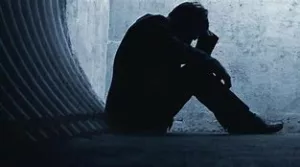- June 2, 2021
- Psychedelic Research
As Research Continues & More Data Becomes Available, We Will Deepen Our Understanding Of The Impact That Psychedelics Have In Reducing The Economic And Health Burden Of Mental Health Disorders.
Download a PDF version of this article
Mental health disorders and depression have a significant economic burden worldwide and in Canada. Treatment as usual has consisted of the prescription of antidepressants alone or in combination with therapy. Preliminary clinical research on the use of psychedelic drugs such as psilocybin (mushrooms), MDMA (ecstasy), LSD and ketamine have shown success in the treatment of mental health disorders, which could translate to a major decrease in the burden on our society’s health and economy.

Globally, an estimated 792 million people (15% of the population) suffer from a mental illness, with more than 50% of the general population having experienced at least one mental disorder at some point in their lives. (1, 2) When substance abuse disorders are included, the number increases to 970 million. Depression and anxiety are the two most common disorders, accounting for 264 million and 285 million cases respectively. (1)
In Canada, 1 in 5 (6.7 million) people per year live with mental illness. In comparison, 2.2 million people have type 2 diabetes and 1.4 million have heart disease. (3) The total economic cost of mental health issues in Canada is at least $50 billion per year, representing 2.8% of Canada’s gross domestic product (GDP), with healthcare, social services and income support expenses making up the largest costs. (3)
Depression, also known as major depressive disorder (MDD), is the most common mental disorder in Canada, estimated at 1.44 million people. Between 1990 – 2017, the prevalence of depression increased by 29%, and is expected to continue to increase over the next 30 years. (1)
Depression can vary in severity from mild to severe and present with a wide range of physical symptoms including decreased pain tolerance, back pain, muscle aches, headaches, vision changes, stomach pain, digestive problems, chest pain, and sexual dysfunction. Individuals with depression and other mental disorders often experience physical health conditions at higher rates than the general population and access health services such as outpatient visits, hospitalizations and emergency department visits at a higher rate than the general public.

A recent study conducted in Ontario estimated that the annual, per-capita direct healthcare cost for major depressive disorder is $3,210 USD ($4,018 CAD). This is compared to $2,629 USD ($3,291 CAD) for those without any psychological issues, and these numbers are expected to increase (4). According to the Mental Health Commission of Canada, the projected annual direct cost will be an estimated $291 billion by 2041. (3)
The true cost of depressive disorders extends far beyond the direct healthcare costs for diagnosis and treatment. Indirect costs such as lost productivity and economic growth, lost income, depletion of labour, and depletion of capital as a result of absenteeism, decreased individual productivity, out-of-pocket medical expenses, death and disability, all contribute to the true burden of mental disorders.

According to the World Health Organization (WHO) mental disorders in the US result in an average of 6 lost days of work per month per 100 workers and a loss of 31 days per month per 100 workers due to decreased productivity while on the job. That translates to 24 million lost work days per year. (5)
When all of these are taken into consideration, it is estimated that the worldwide economic output loss due to mental health disorders is US $16.3 trillion, which is higher than that of cancer, chronic respiratory disease and diabetes. (2)
Typical treatments for depressive and anxiety disorders consist of either pharmacological or psychological interventions. Pharmacological treatments involve the prescription of antidepressants and/or antipsychotics, while the most common psychological interventions are Cognitive Behavioural Therapy (CBT), interpersonal therapy, and supportive therapy. (6) However, 75% of patients prefer psychotherapy over medication and tend to have better outcomes when they receive their preferred treatment. (7)
While multiple studies have found the typical treatments for major depressive disorder to be equally effective in the short-term, they may not be as effective in the long-term. It is estimated that 50% of patients do not reach remission with an initial treatment, with 30%-50% of those patients not responding at all. These patients are designated as ‘treatment resistant.’ (8)
Treatment resistant depression (TRD) can be debilitating for the individuals and places an even greater burden on the healthcare system than treatable depression. Treatment resistant patients tend to have more comorbidities and use significantly more healthcare resources. A recent Canadian study found that “the average number of all-cause outpatient visits increased by 58% among patients with TRD compared to Non-TRD patients…[and] had more than three times the average number of all-cause and depression-related psychiatry visits….” (9)
Often, the first healthcare professional to address mental health issues in Canada is the family physician. (10) However, many physicians have reported not being comfortable with providing psychological interventions to their patients because of time constraints and inadequate training. They also cite the out-of-pocket expense incurred by the patient as a barrier to referring patients to therapy. (11) This tends to lead to a cycle of trial and error with medications. The patient is left managing multiple failures and medication side-effects that can ultimately lead to giving up treatment all together.
“[Individuals]… consistently reported on the negative impact that major depressive disorder and generalized anxiety disorder had on their quality of life. While the causes of the participants’ disorders varied, participants expressed a similar desperate desire to find effective treatment for their conditions. They reported that after overcoming the perceived stigma and shame of their mental health issues… they faced a long journey to obtain effective and sustained treatment, whether psychotherapy, pharmacotherapy, or both…However, all participants agreed that ultimately receiving their preferred type of psychotherapy benefited them in dealing with their depression or anxiety.” (6)
Better treatment approaches are needed to increase the chances of patient remission and to decrease the amount of time needed to achieve remission. (12)
Psychedelic-Assisted Psychotherapy
Psychedelic-assisted therapy (PAT) combines guided psychotherapy with a psychedelic drug, such as psilocybin (mushrooms), MDMA (ecstasy), LSD, ayahuasca, peyote, or ketamine, to treat a patient experiencing end of life anxiety, treatment resistant depression or PTSD.
Throughout the 1950s and 60s research into the use of psychedelics showed great promise as a treatment of mental health disorders when combined with psychotherapy. However, cultural and political shifts combined with fears over recreational use, prompted governments to institute a worldwide ban on psychedelics in 1976, effectively halting medical research. (13)
Even though psychedelics are still classified as controlled substances, over the past few years interest in the study has been reignited in the medical and scientific community. In August of 2020, exemptions under section 56(1) of the Canadian Controlled Drugs and Substance Act (CDSA) allowed the first four terminal cancer patients to use psilocybin for end of life anxiety, opening a legal means to receive treatment. In the US, breakthrough designations were granted for MDMA and ketamine allowing for the resurgence of clinical investigations.
Much like the earlier research, these modern studies indicate that psychedelics such as MDMA combined with psychotherapy are very effective in significantly decreasing or eliminating treatment resistant depression and PTSD. Psilocybin and LSD have been shown to reduce anxiety and depressive symptoms amongst patients with treatment-resistant depression; reduce anxiety and depression amongst terminal patients facing end-of-life; and shown efficacy in treating alcohol and tobacco dependence. (14,15)
To date, we are only aware of one published medical study that specifically examines the cost-effectiveness of psychedelic-assisted psychotherapy, specifically MDMA for the treatment of extreme and severe PTSD. The analysis was based on six clinical trials where participants were provided with 2-3, 90-minute trauma-focused psychotherapy sessions, followed by two 8-hour sessions where 125 mg doses of MDMA were administered. Another 3-4 integration sessions were conducted with the patients following the MDMA sessions. (16)
The direct cost of the intervention was US $7,543 per patient, with 91% of the cost attributed to therapist compensation. Other costs included the MDMA doses, pregnancy and drug abuse tests, and nuclear stress tests.
Results of the study indicated that MDMA-assisted psychotherapy (MAP) was highly cost-effective in the treatment of severe PTSD.
“Projected over 30 years, for a cohort of 1000 patients, MAP as compared with controls averts 42.9 undiscounted deaths; generates 5,553 discounted QALYs [quality adjusted life years]; and saves a discounted net $103 million in combined mental health and general medical care costs… analyses provide reasonable assurance that even with less favorable [medical care cost] values, MAP would retain attractive cost-effectiveness, and likely cost savings…Further, the MAPS trials were designed to help those with treatment resistant PTSD. If inclusion criteria are relaxed to include those who benefit from conventional therapies…incremental effectiveness may be lower; although it is possible that those with less severe PTSD respond even better to MAP.” (16)
Table 1. Projected Combined Mental Health & General Medical Care Costs / Per 1000 Cohorts
| Time Horizon | Deaths Averted | QALYs Saved | $ Saved USD |
|---|---|---|---|
| 30 years | 42.9 | 5553 | $103 million |
| 10 years | 18.9 | 2517 | $36.7 million |
| 3.1 years | 5.9 | 918 | Breaks Even |
Prohibition Partners recently published their own estimates on the potential societal savings associated with using psychedelic medicines to treat mental health conditions. According to their calculations, psilocybin has the potential to save US $148 billion in the United States and US $49.9 billion in Europe. Ketamine estimates are US $85.5 billion in the United States and US $29 billion in Europe. Their calculations were based on the preliminary success rates in randomized control trials, direct and indirect costs to society assessed by medical economists, and the willingness of the general public to take psychedelic medications. (17)
As of this date, we could find no studies or calculations on the potential cost savings of psychedelic medicines in the Canadian context. However, it is logical to assume that since the use of antidepressants and psychotherapy are both considered cost-effective treatments in Canada, that psychedelic-assisted therapy would also be cost-effective.

Psychedelic-assisted therapy generally takes less time to administer at 1-3 months, versus the 3-24 months or more, for traditional psychotherapy. PAT only requires one to three doses of medication to achieve remission, with nearly immediate relief and few adverse side effects, compared to daily antidepressant dosage that can take 6-8 weeks to take effect, be necessary for an indeterminate time frame, have multiple side effects, and may still result in a relapse.
For sufferers, PAT means sooner relief of symptoms, a higher quality of life, fewer visits to doctors or emergency rooms, less use of social services, fewer missed days of work and increased productivity, all of which have economic benefits to society overall.
Based on existing data, it is possible to speculate what the cost and potential savings may be.
If the average cost of a psychotherapist in Canada is USD $140/hour and a full PAT treatment takes 12-25 hours, then the cost of the therapist would range from USD $1680 to $3500. Add on the cost of medication and pre-testing at $600, the direct, one-time cost would range from USD $2280 to $4100.
Based on figures from Ontario, the average annual per capita direct healthcare cost of treating major depressive disorder in Canada is USD $3210 compared to USD $2629 for individuals without – a difference of $581/person/year. There are estimated to be 1.44 million people suffering from depression in Canada per year, translating to a cost of USD $836.64 million per year to treat depressive disorders with current treatments. Using PAT, the one time cost to treat all 1.44 million people with depression would range from an estimated $3.3 billion to $5.9 billion. Below summarizes the projected costs over time.

At the higher estimate, it would only take 6 years for PAT to have a positive economic impact and only 3 years at the lower estimate. This is comparable to the findings of the MAP study on MDMA treatment for PTSD.
In terms of dollars saved, within 25 years, PAT could potentially save the healthcare system between $15 billion to $17.6 billion. Keep in mind these calculations are based on preliminary clinical data and make a few assumptions including the following:
- Patients treated with PAT will remain in remission over the 25 years
- Traditional treatments and remission/relapse rates will remain the same over time
- Inflation is not taken into account
- The cost of therapists and medications remains the same
As clinical research continues and data becomes available, we will begin to have a more precise understanding of the impact that psychedelics have in reducing the economic and health burden of mental health disorders.
References
1. Hannah Ritchie and Max Roser (2018) – “Mental Health”. Published online at OurWorldInData.org. Retrieved from: ‘https://ourworldindata.org/mental-health‘ [Online Resource]
2. Trautmann, Sebastian et al. “The economic costs of mental disorders: Do our societies react appropriately to the burden of mental disorders?.” EMBO reports vol. 17,9 (2016): 1245-9.
3. Mental Health Commission of Canada (2013) – “Making the Case for Investing in Mental Health in Canada.” Published online at Mentalhealthcommision.ca. Retrieved from: https://www.mentalhealthcommission.ca/English/media/3842
4. Chiu M, Lebenbaum M, Cheng J, de Oliveira C, Kurdyak P (2017) The direct healthcare costs associated with psychological distress and major depression: A population-based cohort study in Ontario, Canada. PLoS ONE 12(9): e0184268. https://doi.org/10.1371/journal.pone.0184268
5. World Health Organization. Investing in Mental Health. 2003.
6. Health Quality Ontario. Psychotherapy for major depressive disorder and generalized anxiety disorder: a health technology assessment. Ont Health Technol Assess Ser [Internet). 2017 Nov, 17(15):1-167.
7. Tasca, Giorgio & Town, Joel & Abbass, Allan & Clarke, Jeremy. (2018). Will publicly funded psychotherapy in Canada be evidence based? A review of what makes psychotherapy work and a proposal. Canadian Psychology/Psychologie canadienne. (59) 293-300.
8. Mrazek DA, Hornberger JC, Altar CA, Degtiar I. A review of the clinical, economic, and societal burden of treatment-resistant depression: 1996-2013. Psychiatr Serv. 2014 Aug 1;65(8):977-87.
9. McIntyre RS, Millson B, Power GS. Burden of Treatment Resistant Depression (TRD) in patients with major depressive disorder in Ontario using Institute for Clinical Evaluative Sciences (ICES) databases: Economic burden and healthcare resource utilization. J Affect Disord. 2020 Dec 1;277:30-38.
10. Vasiliadis HM, Lesage A, Adair C, etal: Service use for mental health reasons: cross-provincial differences in rates, determinants, and equity of access. Canadian Journal of Psychiatry 50:614-619, 2005.
11. Grenier J, Chomienne MH, Gaboury I, et al: Collaboration between family physicians and psychologists: what do family physicians know about psychologists’ work? Canadian Family Physician 54:232-233, 2008.
12. Tanner JA, Davies PE, Overall CC, Grima D, Nam J, Dechairo BM. Cost-effectiveness of combinatorial pharmacogenomic testing for depression from the Canadian public payer perspective. Pharmacogenomics. 2020 Jun;21(8):521-531.
13. Leila Rafi and Sasa Jarvis. Psychedelics and Canada’s Regulatory Landscape, July 2020, Capital Markets Bulletin. McMillan.
14. Leor Roseman, Lysia Demetriou, Matthew B. Wall, David J. Nutt and Robin L. Carhart-Harris. Increased amygdala responses to emotional faces after psilocybin for treatment resistant depression, Leor Roseman, 2017. Neuropharmacology.
15. David Nutt, David Erritzoe, Robin Carhart-Harris. Psychedelic Psychiatry’s Brave New World. April 2020, Cell 181.
16. Marseille, Elliot et al. “The cost-effectiveness of MDMA-assisted psychotherapy for the treatment of chronic, treatment-resistant PTSD.” PloS one vol. 15,10 e0239997. 14 Oct. 2020.
17. PSYCH. Legal psychedelic therapies will offer healthcare cost savings in billions of dollars. http://pysch.prohibitionpartners.com/wp-content/uploads/202/10/2.png







